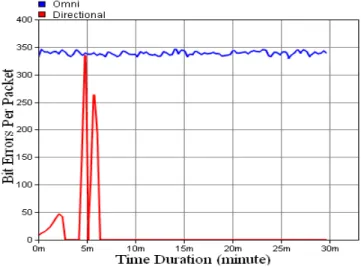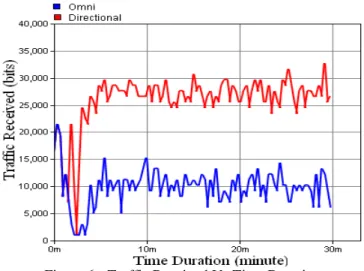254
AN ANTENNA SELECTION FOR MANET NODES AND CLUSTER HEAD
GATEWAY IN INTEGRATED MOBILE ADHOC NETWORK
Ashish Bagwari 1, Danish Quamar2, Noor Mohd3 & Sourabh Bisht4 1
IEEE Member and Assistant Professor, Dehradun Institute of Technology, Dehradun, Uttarakhand 248001 (India) 2, 3, 4
Assistant Professor, Graphic Era University, Dehradun, Uttarakhand 248001 (India)
ABSTRACT
As we know in Mobile Ad hoc network our Nodes are highly mobile. They move around the Network. Due to this network topology and number of neighboring nodes in each node frequently change. Movement of nodes from one to another network also affect to the communication between them. As we know if nodes are within the range of each other they will work properly. But any of one node is not in the range of other node communication will Break. As the number of nodes increases interference and complexity of MANET increases in various issues. For this reason various approaches has been produced to reduce the complexity such as cluster head technique and dominating set based gateway technique introduced. We remove the limitation from the above mentioned approaches using Cluster Head Gateway node (CHG) [1]. In this paper we introduces the selection of Antenna in such a way that if CHG nodes want to send the data to other (CHG or Cluster Nodes) then how the communication will takes place with minimum interference and High QoS. By selecting the appropriate antenna we will reduce the interference and overhead [2], try to re-establish the break link between nodes and increase the performance, throughput and QoS for an ad hoc network and also prevent packet drops during Nodes mobility when data transaction going on between nodes. Finally, this paper conducts simulation experiments in the conditions where we will do the comparative study between Omni-Directional and Directional Antenna.
Keywords: MANET, QoS, Omni Directional Antenna, Directional Antenna, Bit Error per Packet, Throughput, SNR.
1. INTRODUCTION
255 3. PROPOSED WORKING MODEL
Previously, As we know the cluster Network approaches are mainly based on cluster head and cluster gateway where all MANET nodes including Cluster Head & Gateway contains Omni-Directional antenna through which data will send and receive, But in our case we considering one common node which is combination of cluster head and cluster gateway i.e. Cluster head gateway (CHG) [1] with Directional antenna.
As in given figure 1, if any Cluster node want to communicate with other node (either CH at different network or Cluster node within network). Firstly the request will send to its cluster head from the cluster node using Omni-directional antenna then it pass to cluster gateway in order to find the path. once the gateway node find the path it forward the request to other networks cluster head and that cluster head further pass this request to particular node present at that network. Once the request Received by particular node. Both nodes can communicate to each other. But as we can see in Figure 1 between source node and destination node there are some neighbor nodes which can create Interference because using Omni-directional antenna these neighbor nodes can also transmit data in all the direction i.e. data communication over one path will interfere with data communication in other path, and creates Bit error and packet drops. To overcome this limitation we using CHG with directional antenna in figure 2.
Figure 1. Showing the Previous approach having Cluster Head, Cluster Gateway and Cluster Nodes with Omni-Directional antenna.
Now, In our approach instead of using two different nodes (Cluster Head and Gateway) with Omni-directional antenna. We have single node (CHG) with Directional antenna. Using this we can decrease the Interference, no. of nodes, Average Transmission Delay and overheads. As we can see in figure 2.
256
Figure 2. Showing the Current approach having Cluster Head Gateway (CHG) and Cluster Nodes with Directional antenna.
So after analyzed figure 2 we can say Data Interference (Data Quality) is one of the major challenges in MANET. It is also one of the reasons for data loss. In Ad hoc we can minimize this using Directional Antenna because using directional antenna all MANET Nodes including CHG (Cluster Head Gateway) will transmit data in a particular destination direction due to this occurrence of interference and packet drops are very less.
4. SIMULATION SETUP AND RESULTS DISCUSSION
4.1. Simulation Setup
To simulate our Cluster Head Gateway Network, we used Opnet 14.0 v. The simulation parameters and their values are given in Table 1.
TABLE I. SIMULATION PARAMETERS
PARAMETER VALUE
Number of MANET Nodes 12
Number of Moving Nodes 2
Number of Simultaneous communication 10
Size of Area 8000*4000 (m.)
Transmission Range 250 (m.)
Traffic Type Constant Bit Rate (CBR)
Standard Ad hoc Speed 20 m/s
Datagram forwarding rate 100,0 (packets/sec)
Simulation Time 1800 (sec)
Wireless Channel Bandwidth 10 (KHz)
Node Movement Model Reference Point Group Mobility (RPGM)
Data rate 1.024 (kbps)
Transmission Power 146 (db)
Maxi. Receive Life time 1800 (sec)
4.2. Result Discussion
The Performance of the proposed comparative study of Omni and Directional antenna is analyzed with respect to Bit Error per Packet, Throughput, SNR Ratio, Traffic Received and Packet loss ratio.
257
Figure 3. Radio Receiver Bit Error Per Packet Vs Time Duration
Figure 4 showing the Throughput of the whole network with respect to time Duration graph. For Directional antenna when time period below and equal to 2.5 min. throughput is varying between 0 and 1(packets/sec), After 2.5 min. throughput is constantly varying across 1 till 30 min. time period. But For the same time period for Omni-directional antenna value of throughput is 0 (packets/sec) due to the interference with other neighbor nodes.
Directional antenna is having better throughput because it radiates data in a particular direction to avoid interference.
Figure 4. Throughput Vs Time Duration
Figure 5 shows the Signal to Noise Ratio (SNR). For Directional antenna when time period below 2.5 min. SNR is decreasing with time, at 2.5 min. SNR is 16 (db). While time period is 3 min. to 6 min. SNR value is varying between 194 and 9.5 (db). After 6 min. time period SNR value is constantly moving across 195.3 (db) till 30 min. time period. In Omni-directional antenna for the same time period SNR Ratio is varying between -20 and -30.
258
Figure 5. Signal/ Noise Ratio Vs Time Duration
Figure 6 shows Traffic Received Vs time Duration graph. Here for Directional antenna Traffic Received value is increasing with respect to time duration, and varying between 25,000 and 30,000 (bites) but for Omni-directional antenna for the same time period Traffic Received value is decreasing with respect to time period between 20,000 and 5,000 (bits).
Using Figure 6 we can analyze the Traffic Received between Directional and Omni-Directional antenna and calculate the data loss (packet drops).
Figure 6. Traffic Received Vs Time Duration
Figure 7 shows Packet loss Ratio Vs time Duration graph. Here for Directional antenna Packet loss ratio is varying between 1 and 0, below and at 6 min. time period. After 6 min. time period packet loss ratio value is zero up to 30 min. time period. While for Omni-directional antenna Packet loss ratio is constantly varying across 1 up to 30 min. time period.
259
Figure 7. Packet Loss Ratio Vs Time Duration
5. OVERALL CONCLUSIONS
In this paper, we proposed An Antenna Selection for MANET Nodes and Cluster Head Gateway in Integrated Mobile Adhoc Network. We provide minimum interference with high data quality for MANETs by using a Directional Antenna. One of the notable features of this integration strategy is that, Using Directional antenna it reduce the data loss which can be responsible for low QoS at the time of communication between mobile nodes, we are expecting that the proposed strategy will provide better connectivity, Bit Error Rate and better packet delivery with minimum packet loss as compare to Omni-directional antenna. A detailed performance was made with respect to Bit Error per packet, Throughput, SNR Ratio, Traffic Received and Packet loss Ratio. The simulation results confirm that, the purposed approach has better connectivity with less data loss and Interference, good throughput and less Bit Error Rate. In future this approach can be evaluated under different mobility scenarios and the performance can be measured with other large N/w’s. Therefore it can be used to extend the network coverage.
6. ACKNOWLEDGEMENTS
The present work is part of Mobile Ad hoc communication Network. The authors wish to thank their parents for supporting and motivating for this work.
7. REFERENCES
[1]. Ahmad Anzar, Joshi Pankaj, Rathi Vikas, Bagwari Ashish (IEEE Member), “A Cluster Head Gateway
Approach for Deciding the Cluster head in Mobile Adhoc Network” Singapore Conference December 2011 ICCNS 2010: \"International Conference on Computer Networks and Security\".
[2]. C. Chiang, H. Wu, W. Liu, and M. Gerla, Apr.1997. Routing in clustered multihop, mobile wireless network with fading channel. IEEE SICON, pp. 197-211.
[3]. E.M. Royer and C-K Toh, A Review of Current Routing Protocols for Ad hoc wireless Networks, IEEE Personal communication, April 1999, pp. 46-55.
[4]. NFS Wireless & Mobile Communications Workshop, Northern Virgenia, March 1997. [5]. NFS Tethaless T3 and beyond Workshop, interim report November, 1998.
[6]. NFS Wireless Information Technology & Networks Program announcement NFS, 1999.
[7]. Siuli Roy, Dola Saha, Somprakash Bandopadhyaya, Tetsura Ueda, Shinsuke Tanaka, “Service Differentiation
in Multi-hop Inter-Vehicular Communication using Directional Antenna” IEEE 2004, pp. 2176-2180. [8]. Dola Saha, Siuli Roy, Somprakash Bandopadhyaya, Tetsura Ueda, Shinsuke Tanaka, “An Adaptive
Framework for Multipath Routing via Maximally Zone-Disjoint Shortest Paths in Ad hoc Wireless Networks




